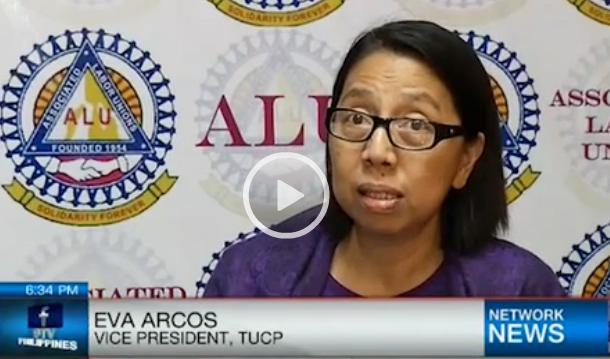| INUNDATED: (Clockwise, from left) Commuters walk along España Boulevard in Manila; residents turn back at a bridge destroyed by floodwaters in Barangay Kabuluan in Sta. Elena, Camarines Norte; and a commercial aircraft is towed at the aviation area at the NAIA, whose tarmac was flooded with three to four inches of water. JOVEN CAGANDE, FRANCIS ELEVADO, AND RUDY SANTOS |
MANILA, Philippines - At least 23 areas in the Philippines, including Metro Manila cities, are prone to storm surges during typhoons as strong as Yolanda, the Department of Science and Technology (DOST)’s Nationwide Operational Assessment Hazard (NOAH) project found out.
The risk areas include the coastal cities of Navotas, Las Piñas, Parañaque and Manila in Metro Manila and the coastal towns in the provinces of Pampanga, Bataan, Quezon, Albay and Camarines Sur.
“We did simulation and we found that no less than 23 areas are prone to a storm surge whenever there is a typhoon, and we have submitted this to the respective local government units, so they can make the necessary preparations,” Project NOAH executive director Mahar Lagmay told participants of the Business Case for Disaster Risk Reduction summit held at the SMX Convention Center in Pasay City the other day.
Philippine Institute of Volcanology and Seismology (Phivolcs) director Renato Solidum Jr., meanwhile, warned that should the West Valley Fault move again and cause a 7.2-magnitude earthquake, around 31,000 people may die.
The West Valley Fault – which runs across Marikina, Quezon City, Pasig, Makati and Taguig – has moved four times in the last 1,400 years, with a major earthquake occurring every 400 years. The last major earthquake took place in 1658 or 356 years ago. “Given such facts, it is safe to say that we can expect the West Valley Fault to move within our lifetime,” Solidum said.
He explained that the earthquake itself would not cause the deaths, but the effects of the shaking would cause buildings to collapse, fire, liquefaction and landslide, which are expected to claim thousands of lives.
Moreover, the damage and death would happen not only in the areas along the fault line but also in the areas around it.
“We should not feel complacent if our houses or buildings are not located along the fault line or near it because even those far from it will be affected because of the shaking effect. The shaking will bring the damage and the deaths if we are not prepared,” Solidum explained.
Aside from loss of lives, natural disasters also cause dire economic losses to both government and private business.
In 2012, floods, typhoons and earthquakes caused more than $274 billion of economic losses in Asia.
Last year, natural disasters affected 95 million people and caused $116 billion in direct economic losses, of which $10.42 billion belonged to the Philippines, according to data from the United Nations Office for Disaster Risk Reduction.
These are the reasons why SM Supermalls hosted the forum that gathers stakeholders to share their views on how people, the government and private businesses could work together to improve disaster resiliency and preparedness efforts.
SM Supermalls aims to present ways to make businesses more risk-sensitive so that all stakeholders, including the government, will be encouraged to invest more heavily in disaster risk reduction efforts.
The forum was held in coordination with SM Cares, the corporate social responsibility arm of SM Supermalls.
Meanwhile, the Trade Union Congress of the Philippines (TUCP) yesterday sought the immediate relocation of over 7,000 families still living along rivers and creeks in Metro Manila, long after the government evacuated those residing in identified danger zones.
“Around 1,685 informal settler families have been transferred and the remaining 7,092 are still living in rivers, creeks and waterways situated in 13 cities within urban National Capital Region, although the P50-billion budget for their relocation has been released,” TUCP said.
At least 2,123 informal settler families are living along Tullahan River that runs through Quezon City, Caloocan, Valenzuela and Malabon; 1,840 along Tripa de Galina in Pasay City; 1,520 on Manggahan Floodway in Pasig City; 837 along San Juan River; 482 along Maricaban creek; 587 along Estero de Maypajo; 326 along Estero de Sunog Apog, and nine along Pasig River.
Last week, the TUCP said, families living in Manggahan Floodway in Pasig City were given eviction notice by the Department of Public Works and Highways. They were ordered to leave their homes by the end of this month in spite of an agreement between the government and program participants that no informal settler families would be evicted while there is no housing unit available.
“It’s revolting to see poor working people and their families still in danger areas in Metro Manila waiting to be transferred to affordable housing units. Many of them are beginning to give up on government promise to transfer them. Some felt abandoned and decided to no longer cooperate,” TUCP executive vice president Gerard Seno added.
The TUCP also said the relocation of the informal settlers may further be delayed when the national ban prohibiting transfer of people takes effect four months before the May 2016 elections. – By Perseus Echeminada (The Philippine Star) With Mayen Jaymalin

